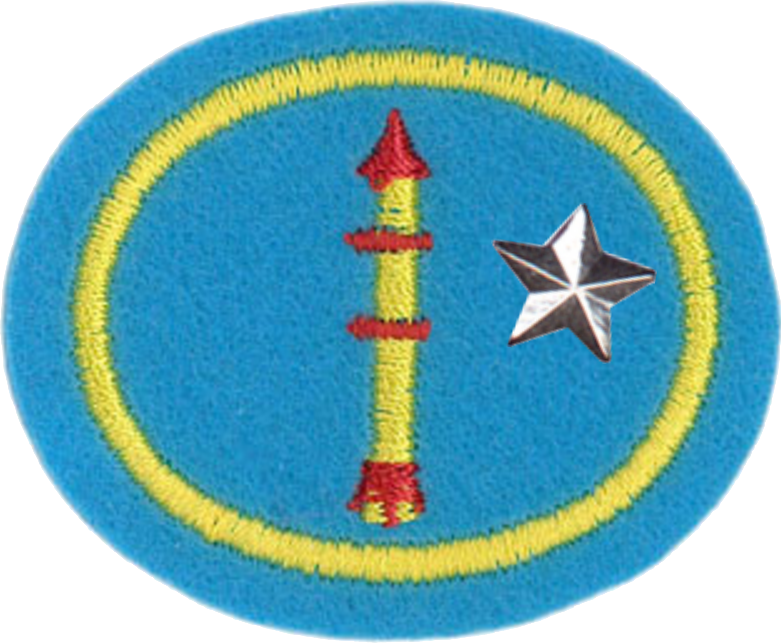Difference between revisions of "AY Honors/Model Rocketry - Advanced"
Jomegat bot (talk | contribs) (Convert honor_tab to honor_landing *** existing text overwritten ***) |
DesignerBot (talk | contribs) m (insert nowiki-Tag infront of the honor_landing-Template so there is no paragraph infront of the language selector) |
||
| Line 1: | Line 1: | ||
<translate> | <translate> | ||
| − | {{honor_landing | + | <nowiki/>{{honor_landing |
|honorname=Model Rocketry - Advanced | |honorname=Model Rocketry - Advanced | ||
|skill=2 | |skill=2 | ||
Revision as of 01:58, 21 January 2021
| Model Rocketry - Advanced | |
|---|---|
| Arts, Crafts and Hobbies | |
Skill Level 123 | |
Approval authority General Conference | Year of Introduction 1970 |
See also | |
AY Honors/Model Rocketry - Advanced/Overview
The most challenging requirement of this honor is probably this:
3. Design, build (not from a kit), finish, and paint a single-stage rocket. Check for stability, and successfully launch and recover this rocket.
1. Have the Model Rocketry honor.
2. From a kit, build, successfully launch, and recover a boost glider.
3. Design, build (not from a kit), finish, and paint a single-stage rocket. Check for stability, and successfully launch and recover this rocket.
4. Do one of the following:
- a. From a kit build, finish, and paint a two-stage rocket. Successfully launch and recover this rocket.
- b. From a kit, build, finish, and paint a three-engine clustered single-stage rocket. Successfully launch and recover this rocket.
5. Design an electrical launch system. When this has been approved by your instructor, build this system and use it to launch rockets at least five times.
6. Describe and demonstrate single station altitude tracking. With the aid of a helper, track the same rocket three times using three different sizes of engines and compare altitudes with an altitude finder.
7. Compare the velocity and altitude of two different weights of rockets using the same size engine.
1
For tips and instruction see Model Rocketry.
2
A boost glider is a model having a rocket-powered ascent, transitions to a glider at the apex of its flight, and then glides (usually in circles) back to the ground using aerodynamic surfaces (wings). Most boost gliders locate the rocket engines towards the front of the aircraft, as this eases many of the design challenges involved in powered flight. The rocket portions are ejected from the craft during transition (gliders that do not separate are called rocket gliders rather than boost gliders). The Space Shuttle is an example of a boost glider (though it is most decidedly not a model!) Estes makes a model Space Shuttle which is a boost glider. See here for more information about boost gliders.
Though these models are among the most challenging rocket models to build, a modeler with careful attention to detail has every reason to expect success.
3
4
4a
4b
5
6
7
Content on this wiki is generated by people like you, and no one has created a lesson plan for this honor yet. You could do that and make the world a better place.
See AY Honors/Model Lesson Plan if you need ideas for creating one.
- Pages using DynamicPageList3 parser function
- Instructor Required
- AY Honors/Lesson Plans
- AY Honors/Needs Lesson Plan
- Has insignia image
- AY Honors/Artisan Master Award
- AY Honors/Honor landing
- AY Honors/Arts, Crafts and Hobbies
- AY Honors/Introduced in 1970
- AY Honors/Skill Level 2
- AY Honors/Approved by General Conference

